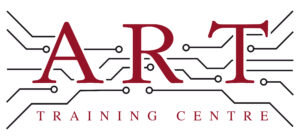Definition
DFN (Dual Flat No-lead) is a type of surface-mount package used in electronics manufacturing. It features a flat, rectangular shape with no leads protruding from the sides, allowing for a compact design and efficient thermal performance. DFN packages are commonly used for integrated circuits (ICs) and are valued for their low profile and small footprint on printed circuit boards (PCBs).
How It’s Used in the Industry
In electronics assembly, DFN packages are typically mounted onto PCBs using surface mount technology (SMT). The process begins with the application of solder paste to the PCB pads where the DFN will be placed. The DFN is then positioned accurately on the solder paste using pick-and-place machines. Following this, the assembly is passed through a reflow oven, where heat melts the solder, creating strong electrical and mechanical connections. For technicians, understanding DFN assembly is crucial, as it directly impacts the reliability and performance of the final product. This knowledge is essential for both novices and experienced professionals, ensuring quality standards are maintained.
History & Origins
DFN packages became common in the late 1990s as the demand for smaller and more efficient electronic devices increased. The rise of mobile technology and portable electronics necessitated compact components, leading to the adoption of DFN designs. Industry standards, such as those developed by IPC, helped formalise the manufacturing processes and guidelines for using DFN packages. This evolution in technology and design has made DFN a staple in modern electronics manufacturing.
Variations
There are several variations of DFN packages, including the thermal DFN (TDFN), which features an exposed pad for improved heat dissipation. Compared to traditional leaded packages, DFN offers a smaller footprint and enhanced performance due to its low inductance and capacitance. Other similar packages include QFN (Quad Flat No-lead) and MLF (Micro Leadframe), which also focus on compact designs but may differ in lead configurations and thermal properties. Understanding these variations helps technicians select the appropriate package for specific applications.
Modern Applications
Today, DFN packages are widely used in various applications, including consumer electronics, automotive systems, and industrial equipment. Their compact size and efficient performance make them suitable for surface mount assembly, where space is at a premium. DFN packages are critical for ensuring quality and reliability in electronic products, as they comply with IPC standards, which govern manufacturing processes. This relevance extends to professional training, where understanding DFN is essential for future technicians in the field.
Practical Tips & Training
When working with DFN packages, it is essential to ensure proper solder paste application and alignment during assembly to avoid defects. Inspecting solder joints with magnification tools can help identify issues early. Always adhere to safety guidelines when handling electronic components and soldering equipment. Structured training and certification in electronics can enhance understanding of DFN technology, ensuring technicians are well-equipped to maintain high standards in their work.


